目录
- 一、前言
- 二、语法对比
- 数据表
- datediff()
- date_format()
- year()/month()/day()/hour(编程客栈)/minute()/second()
- from_Unixtime()/unix_timestamp()
- 三、小结
一、前言
环境:
Windows11 64位python3.9mysql8pandas1.4.2
本文主要介绍 MySQL 中的日期函数date_add()/date_sub()、date_format()、year()/month()/day()/hour()/minute()/second()、datediff()、datepart()、from_unixtime()、unix_timestamp()如何php使用pandas实现,同时二者又有什么区别。
注:Python是很灵活的语言,达成同一个目标或有多种途径,我提供的只是其中一种解决方法,大家有其他的方法也欢迎留言讨论。
二、语法对比
数据表
本次使用的数据如下。
使用 Python 构建该数据集的语法如下:import pandas as pd
import numpy as np
df1 = pd.DataFrame({ 'col1' : list(range(1,7))
,'col2' : ['AA','AA','AA','BB','AA','BB']#list('AABCA')
,'col3' : ['2022-01-01','2022-01-01','2022-01-02','202http://www.devze.com2-01-02','2022-01-03','2022-01-03']
,'col4' : ['2022-02-01','2022-01-21','2022-01-23','2022-01-12','2022-02-03','2022-01-05']
,'col5' : [1643673600,1开发者_Go开发642723200,1642896000,1641945600,1643846400,1641340800]
})
df1['col3'] = pd.to_datetime(df1.col3)
df1['col4'] = pd.to_datetime(df1.col4)
df1
注:直接将代码放 jupyter 的 cell 跑即可。后文都直接使用
df1调用对应的数据。
使用 MySQL 构建该数据集的语法如下:
with t1 as( select 1 as col1, 'AA' as col2, '2022-01-01' as col3, '2022-02-01' as col4, 1643673600 as col5 union all select 2 as col1, 'AA' as col2, '2022-01-01' as col3, '2022-01-21' as col4, 1642723200 as col5 union all select 3 as col1, 'AA' as col2, '2022-01-02' as col3, '2022-01-23' as col4, 1642896000 as col5 union all select 4 as col1, 'BB' as col2, '2022-01-02' as col3, '2022-01-12' as col4, 1641945600 as col5 union all select 5 as col1, 'AA' as col2, '2022-01-03' as col3, '2022-02-03' as col4, 1643846400 as col5 union all select 6 as col1, 'BB' as col2, '2022-01-03' as col3, '2022-01-05' as col4, 1641340800 as col5 ) select * from t1;
注:直接将代码放 MySQL 代码运行框跑即可。后文跑 SQL 代码时,默认带上数据集(代码的1~8行),仅展示查询语句,如第9行。
对应关系如下:
| Python 数据集 | MySQL 数据集 |
|---|---|
| df1 | t1 |
date_add()/date_sub()
时间的加减,在 MySQL 中,使用的是date_add()/date_sub()来实现,二者可以替换使用,只要对相加/减的时间加上负号即可(详见后面例子)。
Timedelta()或DateOffset()实现,二者有差异,如果是针对月份和年度计算差值,只能使用后者;如果是计算日、时、分、秒,则二者通用。时间范围对应的语法参数见下表:
| 时间范围 | date_add()/date_sub() | pandas.Timedelta() | pandas.DateOffset() |
|---|---|---|---|
| 年 | year | - | years |
| 月 | month | - | months |
| 日 | day | days | days |
| 时 | hour | hours | hours |
| 分 | minute | minutes | minutes |
| 秒 | second | seconds | seconds |
1、增加1天
MySQL 增加 1 天,可以使用date_add()+1 day或者用date_sub()-1 day。
pd.Timedelta(days=1)或者pd.DateOffset(days=1)。
| 语言 | Python | MySQL |
|---|---|---|
| 代码 | 【Python1】df1.col3 + pd.Timedelta(days=1)【Python2】df1.col3 + pd.DateOffset(days=1) | 【MySQL1】select date_add(t1.col3,interval 1 day) as col3_1 from t1;【MySQL2】select date_sub(t1.col3,interval -1 day) as col3_1 from t1; |
| 结果 |
|
|
2、减掉1天
| 语言 | Python | MySQL |
|---|---|---|
| 代码 | 【Python1】df1.col3 + pd.Timedelta(days=-1)【Python2】df1.col3 + pd.DateOffset(days=-1) | 【MySQL1】select date_add(t1.col3,interval -1 day) as col3_1 from t1;【MySQL2】select date_sub(t1.col3,interval 1 day) as col3_1 from t1; |
| 结果 |
|
|
datediff()
计算时间的差值,在 MySQL 中,使用datediff(<被减数>,<减数>)(即<被减数>-<减数>)实现;而在 Pandas 中,操作相对简单,两个 Series 相减即可。但是相减之后的数据类型是timedelta64[ns],如果要用于比较大小,或需要转化为整数,将timedelta64[ns]的数值提取出来,提取数值可以使用其属性days并借助apply()实现,具体代码逻辑见以下例子。
| 语言 | Python | MySQL |
|---|---|---|
| 代码 | (df1.col4-df1.col3).apply(lambda x:x.days) | select datediff(col4,col3) as diff from t1; |
| 结果 |
|
|
date_format()
格式设置,在 MySQL 中,使用date_format(),在 Python 中,使用strftime(),二者都是将时间类型转化为字符串类型。标识符有一点差异,前者的分使用%i,秒使用%s,而后者分使用%M,秒使用%S。
| 时间范围(示例) | date_format() | strftime() |
|---|---|---|
| 年,0000~9999 | %Y | %Y |
| 月,01~12 | %m | %m |
| 日,01~31 | %d | %d |
| 时,python00~24 | %H | %H |
| 分,00~59 | %i | %M |
| 秒,00~59 | %s | %S |
格式化为:年份-月份
MySQL 直接使用date_format(列,"<格式符号>")函数套用即可;而 Python 中,由于strftime('<格式符号>')是作用于时间类型,而df1.col3是 Series 类型,所以需要使用apply()来辅助处理每一个值(如下 Python 代码)。
| 语言 | Python | MySQL |
|---|---|---|
| 代码 | df1.col3.apply(lambda x:x.strftime(‘%Y-%m’)) | select date_format(t1.col3,‘%Y-%m’) as col3_1 from t1; |
| 结果 |
|
|
year()/month()/day()/hour()/minute()/second()
取时间的某一部分(如:年、月、日、时、分、秒),在 MySQL 中,直接使用对应的函数作用于字段即可。
在 Python 中,时间类型的值也有对应的属性可以获取到对应的值,同样地,由于df1.col3是 Series 类型,所以需要使用apply()来辅助处理每一个值(如下 Python 代码)。
| 语言 | Python | MySQL |
|---|---|---|
| 代码 | df_timepart = pd.concat([df1.col4.apply(lambda x:x.year),df1.col4.apply(lambda x:x.month),df1.col4.apply(lambda x:x.day),df1.col4.apply(lambda x:x.hour),df1.col4.apply(lambda x:x.minute),df1.col4.apply(lambda x:x.second)],axis=1)df_timepart.columns=[‘year’,‘month’,‘day’,‘hour’,‘minute’,‘second’]df_timepart | select year(col4),month(col4),day(col4),hour(col4),minute(col4),second(col4) from t1; |
| 结果 |
|
|
from_unixtime()/unix_timestamp()
使用时间戳时,需要特别注意:pandas 采用的是 零时区的时间,MySQL 会默认当地时间,北京时间采用的是东八区,所以北京的时间会比零时区早8小时,也就是说,同一个时间戳,北京时间会比零时区时间多8小时,如:1577836800,转化为北京时间是【2020-01-01 08:00:00】,转化为零时区时间为【2020-01-01 00:00:00】。
1、时间戳转时间
时间戳转时间,在 MySQL 中,通过from_unixtime()函数直接作用于列即可,还可以指定时间格式,格式化字符参考date_format()中的表格。在 Pandas 中,通过to_datetime()实现,注意需要指定unit,它根据时间戳的精度设置,常见参数有:【D,s,ms】,分别对应日数、秒数、毫秒数(相对1970-01-01 00:00:00的间隔数)。注意:如果需要转化为东八区,只能通过手动添加 8 小时。
| 语言 | Python | MySQL |
|---|---|---|
| 代码 | 【Python 1 默认时区】pd.to_datetime(df1.col5, unit=‘s’)【Python 2 东八时区】pd.to_datetime(df1.col5, unit=‘s’)+pd.Timedelta(hours=8) | select from_unixtime(col5) from t1; |
| 结果 |
|
|
2、时间转时间戳
时间转时间戳,在 MySQL 中,通过unix_timestamp()函数直接作用于列即可。在 Pandas 中,通过apply()+timestamp()实现,如果需要转化为东八区,先对时间做一层tz_localize("Asia/Shanghai")处理,然后再转化即可,返回的是浮点数。注意:这里有一个小细节,由于返回的值默认是科学计数方式,而我需要查看完整数字串,而且没有小数值,我加了int()处理。如果使用的时间精确到毫秒,即存在小数,加int()处理会丢失精度,应用时需要结合自己的实际情况和需求做处理。
| 语言 | Python | MySQL |
|---|---|---|
| 代码 | 【Python 1 默认时区】df1.col4.apply(lambda x:int(x.timestamp()))【Python 2 东八时区】df1.col4.apply(lambda x:int(x.tz_localize(“Asia/Shanghai”).timestamp())) | select unix_timestamp(col4) from t1; |
| 结果 |
|
|
三、小结
1、一个时间自定义加减使用Timedelta()或DateOffset();
strftime();4、取时间的指定部分,使用对应的属性 year、month、day、hour、minute、seGxBsEjcond;5、时间戳和时间的转化:to_datetime()、timestamp()。
到此这篇关于用Pandas 实现MySQL日期函数的效果的文章就介绍到这了,更多相关Pandas日期函数内容请搜索我们以前的文章或继续浏览下面的相关文章希望大家以后多多支持我们!
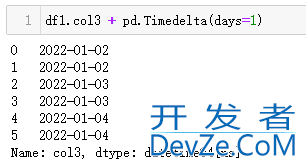
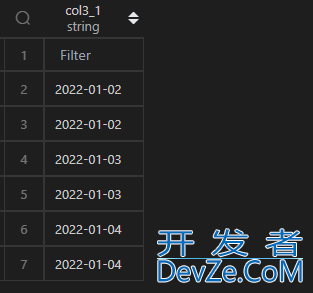
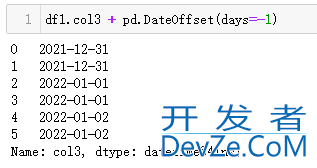
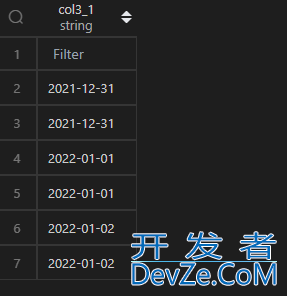
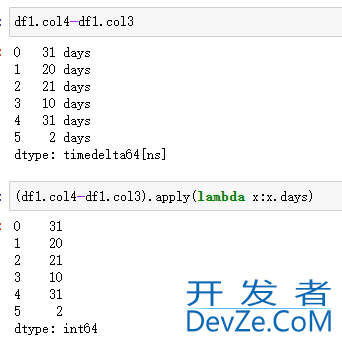
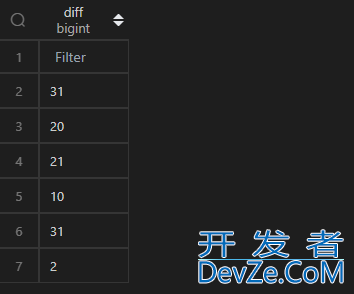
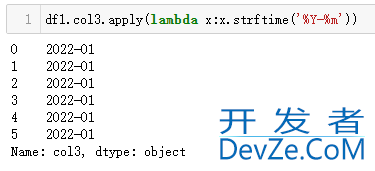
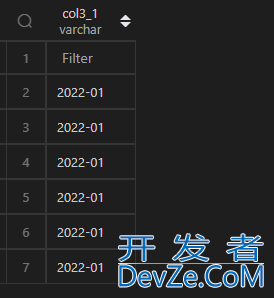
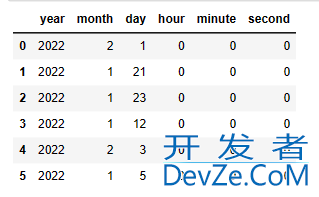
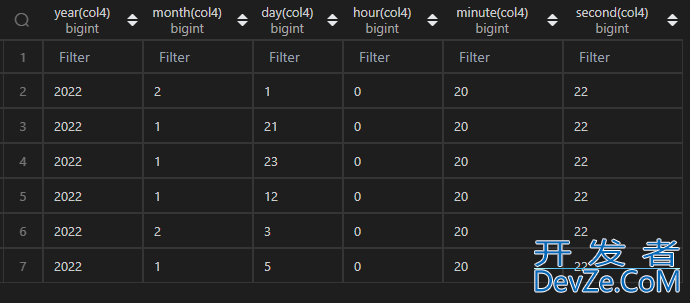
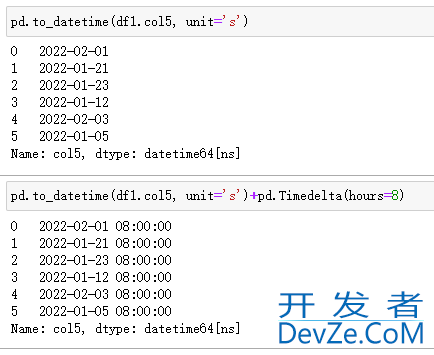
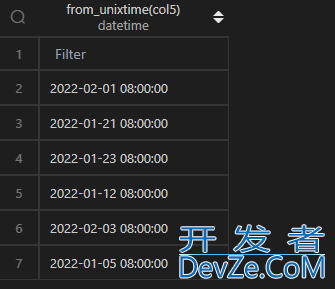
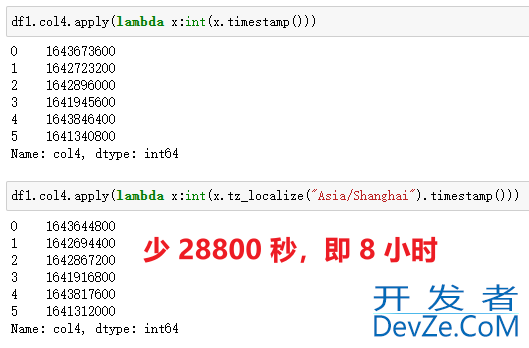
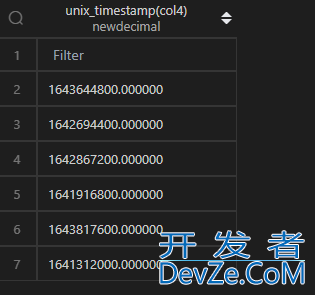
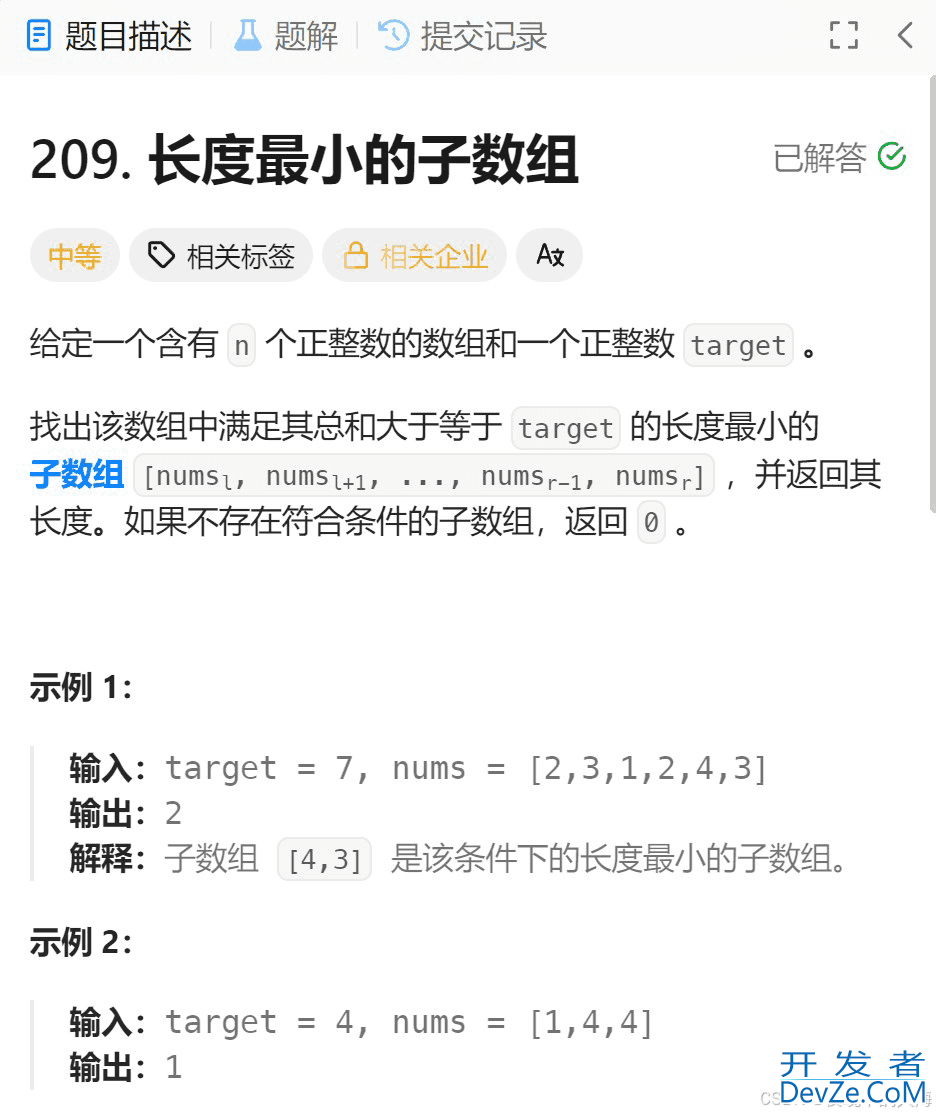
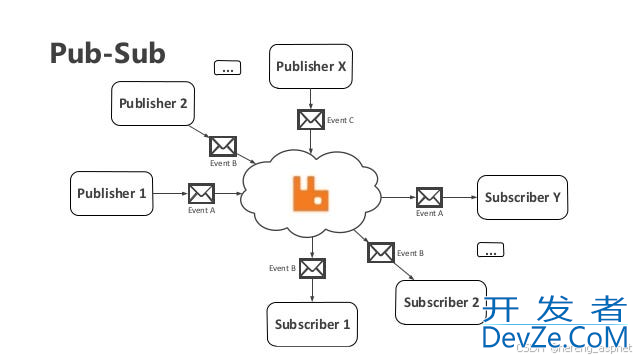



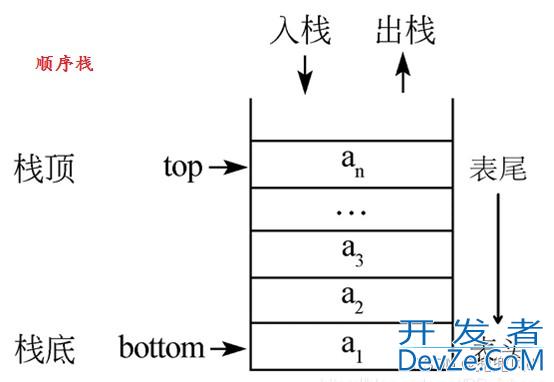

 加载中,请稍侯......
加载中,请稍侯......
精彩评论